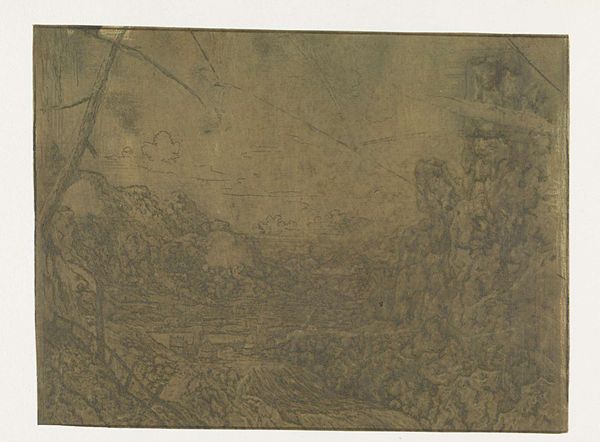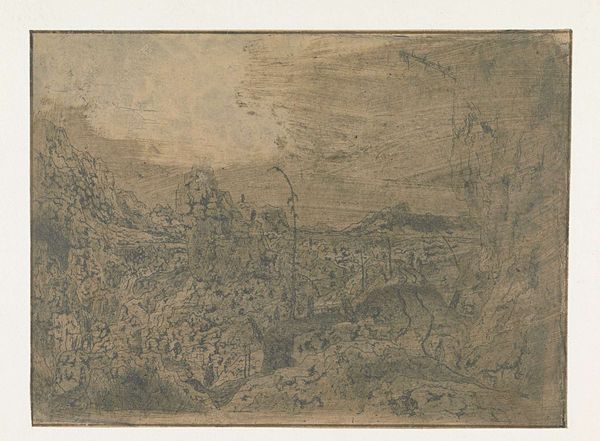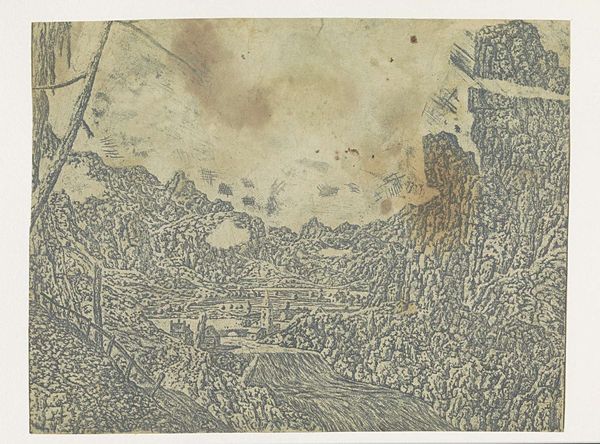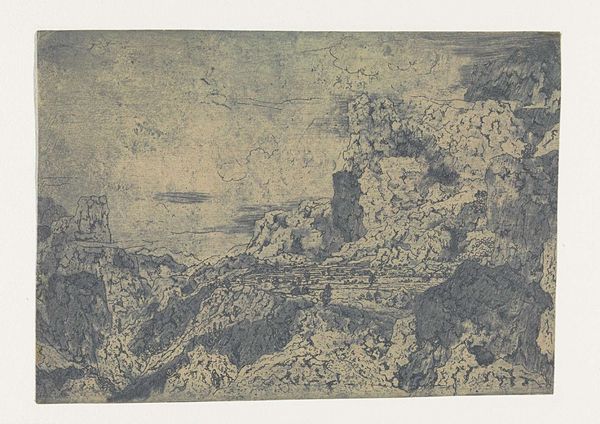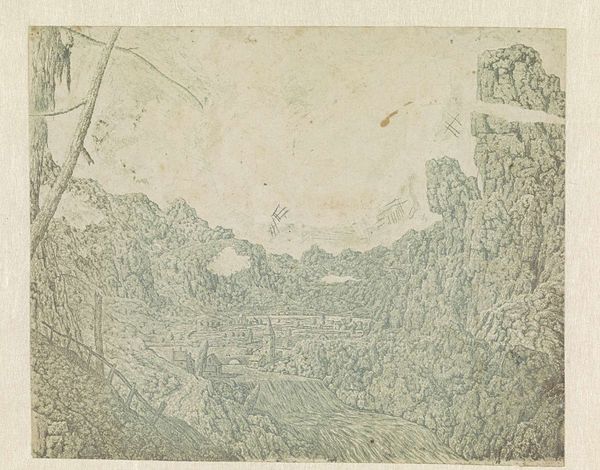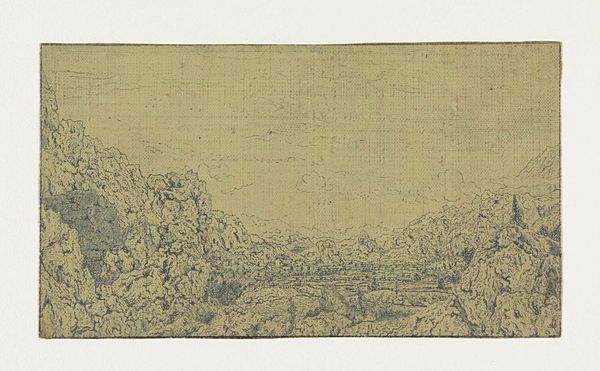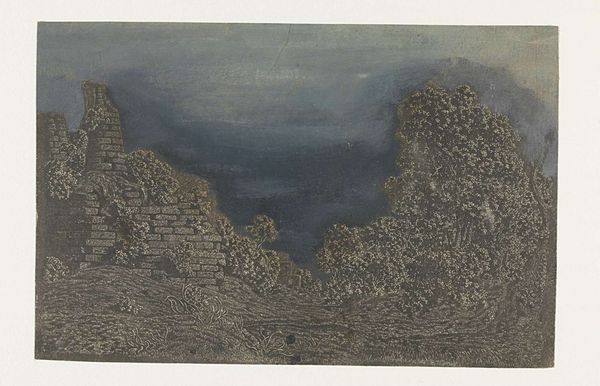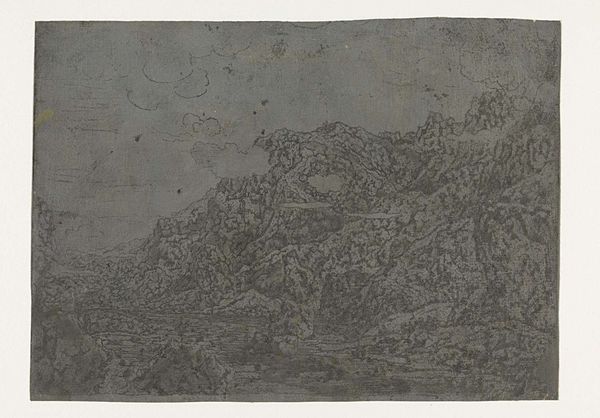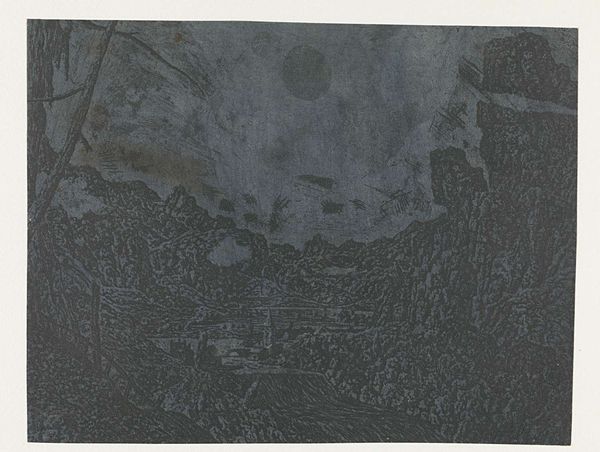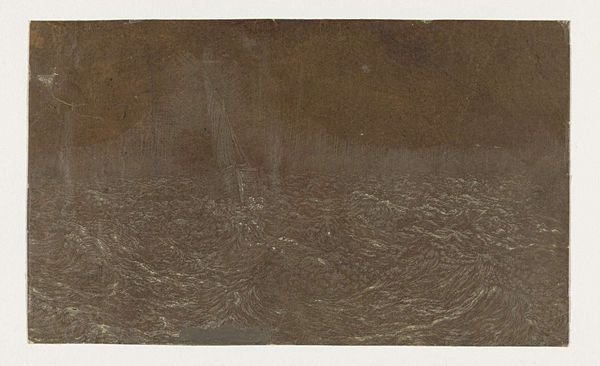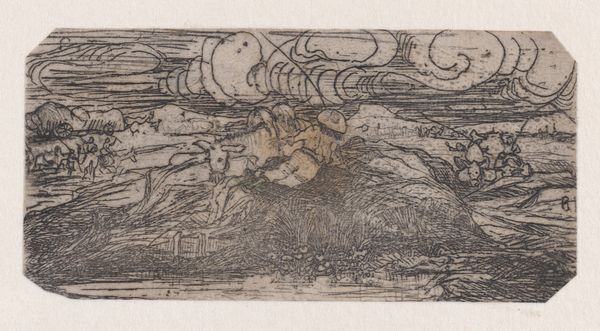
print, etching
#
baroque
# print
#
etching
#
landscape
#
etching
Dimensions: height 150 mm, width 189 mm
Copyright: Rijks Museum: Open Domain
Editor: We are looking at "Landscape with a Waterfall, Second Version" by Hercules Segers, dating from around 1625-1627. It's an etching, currently held at the Rijksmuseum. It feels like an end-of-days kind of scene; everything looks desolate and immense. What do you see in this piece? Curator: It's a striking print, isn't it? I see a reflection of the tumultuous 17th century in its craggy, almost tormented landscape. Consider the socio-political context: the Dutch Republic was in its Golden Age, yet war and religious conflict were ever-present. Do you think the harshness of the landscape reflects that anxiety? Editor: It definitely could. It's not the typical idyllic landscape. Curator: Exactly. Segers was pushing back against the conventions of his time. Think about it: most landscape paintings celebrated nature's bounty. Segers gives us something unsettling. His innovative etching techniques allowed him to create these textures which reinforce the sense of an untamed, even hostile nature, especially within the light. How does this radical approach resonate with you? Editor: I suppose it reflects a more honest relationship with nature than we typically see in art from that era, a rejection of idealization. Curator: Precisely! Segers almost seems to be anticipating later eco-critical perspectives. The landscape isn't just a backdrop; it's an active force, perhaps even a victim of human activity, of historical tensions. His work, even back then, was about connecting to more diverse critical perspectives on environment. Editor: That’s fascinating. I never thought about 17th-century art in that way. Curator: Segers was a radical, ahead of his time. This etching becomes not just a pretty picture, but a provocation, a question about our place in the world. Editor: I am struck now by how forward-thinking this work is, using landscape to reflect broader cultural and political anxieties, just wow! Curator: Yes, it opens a window onto understanding art as a dialogue with society and its discontents.
Comments
rijksmuseum about 2 years ago
⋮
The peculiar spots in the sky are caused by false biting, which occurs when the plate is not properly covered with etching ground or stopping-out varnish. The sun-like round spot encircled by a ring of light looks surreal.
Join the conversation
Join millions of artists and users on Artera today and experience the ultimate creative platform.
